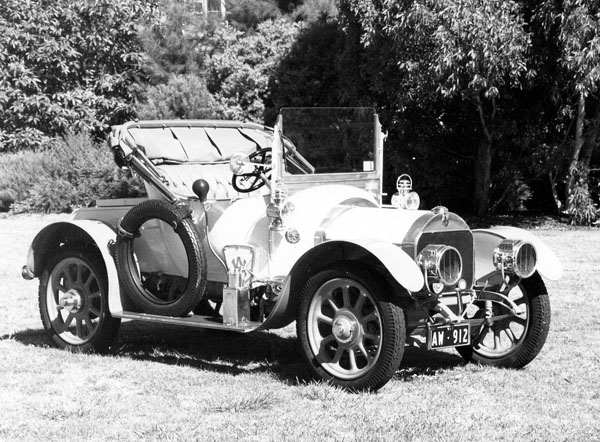Armstrong Whitworth was a British firm that commenced manufacturing cars in 1904, later merging with Siddeley-Deasy to form Armstrong-Siddeley.
In the early days, the firm produced comparatively large tourers, noted for their eminently practical design.
This 1912 model has a tighter turning circle than a modern Mini Minor, despite a wheelbase of 4064 mm (160 inches).
Also unusual is the ease with which the road wheels can be detached. Each wheel slides on a spline, secured only by a large hexagonal nut.
The basic engineering was orthodox. The four cylinder engine developed 25 brake horsepower, giving a maximum road speed of 80 km/h (50 mph).
The clutch was remarkably complicated, having 55 plates, all running in oil, and was said to provide sweeter gear changes. The four speed crash-type gearbox drove the rear axle through a torque tube.
The suspension system – semi-elliptics at the front and three-quarter elliptics at the rear – provided outstanding road holding for the day.
A worm and worm wheel steering system was used.
Braking was done by a foot-operated transmission brake and rear wheel drum brakes, operated by a hand lever.
